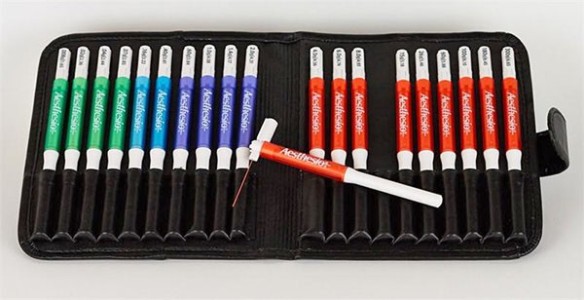Authors
M. C. Acosta, C. Luna, S. Quirce, C. Belmonte, J. Gallar
Lab
Instituto de Neurociencias, Universidad Miguel Hernández-CSIC, San Juan de Alicante, Spain
Journal
PAIN
Abstract
Peripheral neural mechanisms underlying the sensations of irritation, discomfort, and itch accompanying the eye allergic response have not been hitherto analyzed. We explored this question recording the changes in the electrical activity of corneoconjunctival sensory nerve fibers of the guinea pig after an ocular allergic challenge. Sensitization was produced by i.p. ovalbumin followed by repeated application in the eye of 10% ovalbumin on days 14 to 18. Blinking and tearing rate were measured. Spontaneous and stimulus-evoked (mechanical, thermal, chemical) impulse activity was recorded from mechanonociceptor, polymodal nociceptor and cold corneoscleral sensory afferent fibers. After a single (day 14) or repeated daily exposures to the allergen during the following 3 to 4 days, tearing and blinking rate increased significantly. Also, sensitization was observed in mechanonociceptors (transient reduction of mechanical threshold only on day 14) and in polymodal nociceptors (sustained enhancement of the impulse response to acidic stimulation). In contrast, cold thermoreceptors showed a significant decrease in basal ongoing activity and in the response to cooling. Treatment with the TRPV1 and TRPA1 blockers capsazepine and HC-030031 reversed the augmented blinking. Only capsazepine attenuated tearing rate increase and sensitization of the polymodal nociceptors response to CO2. Capsazepine also prevented the decrease in cold thermoreceptor activity caused by the allergic challenge. We conclude that changes in nerve impulse activity accompanying the ocular allergic response, primarily mediated by activation of nociceptor’s TRPV1 and to a lesser degree by activation of TRPA1 channels, explain the eye discomfort sensations accompanying allergic episodes.
BIOSEB Instruments Used
Von Frey Filaments (Bio-VF-M)
Source :
http://www.sciencedirect.com/science/article/pii/S0304395913003801

 Pain - Thermal Allodynia / Hyperalgesia
Pain - Thermal Allodynia / Hyperalgesia Pain - Spontaneous Pain - Postural Deficit
Pain - Spontaneous Pain - Postural Deficit Pain - Mechanical Allodynia / Hyperalgesia
Pain - Mechanical Allodynia / Hyperalgesia Learning/Memory - Attention - Addiction
Learning/Memory - Attention - Addiction Physiology & Respiratory Research
Physiology & Respiratory Research











![Dynamic Weight Bearing 2.0 – Postural Module [Add-on]](https://bioseb.com/733-home_default/dynamic-weight-bearing-20-add-on-postural-module.jpg)
























 Pain
Pain Central Nervous System (CNS)
Central Nervous System (CNS) Neurodegeneration
Neurodegeneration Sensory system
Sensory system Motor control
Motor control Mood Disorders
Mood Disorders Other disorders
Other disorders Muscular system
Muscular system Joints
Joints Metabolism
Metabolism Cross-disciplinary subjects
Cross-disciplinary subjects CONFERENCES & MEETINGS
CONFERENCES & MEETINGS 